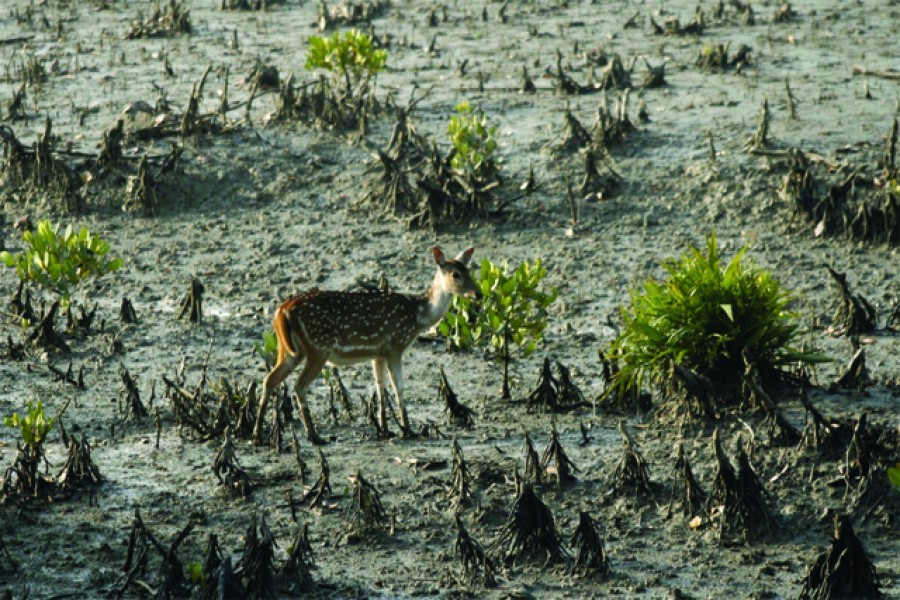At a time when climate change has become a major concern the world over, the prestigious Economist has carried an in-depth analysis of the impact of the accelerated deforestation of the Amazon rainforest, the world's largest, on the region's as well as the planet's climate. Euphemistically called the world's lungs, the Amazon serves as a sink of carbon, which helps keep the world cooler. With the loss of 800,000 square kilometre of the 4.0 million square kilometre forest since the early 1970's, the forest is fast approaching towards a tipping-point or a point of no return where the process of self-destruction for the forest will set in. This has caused the average temperature in the basin to rise by 0.6 degree centigrade. Over the decades, much of the Amazon basin would be reduced to something like a savannah called cerrado, the magazine argues. The prospect looks dire not only for the countries in South America but also for the world at large.
It is against such a backdrop, the world's largest mangrove, the Sunderbans also demands an objective analysis of the impacts of natural forces and human activities on it, particularly after the two cyclones Sidr and Aila in 2007 and 2009 respectively. If the world's largest rainforest can be considered the lungs of the world, the largest mangrove with an area of 10,000 square kilometres -of which 6,000-square-kilometre area is in Bamgladesh part and the rest 4,000 kilometre is in Indian part -is much more. Had it not taken the battering from storms or tidal bores first, thus mitigating the initial ferocity, the coastal regions of the country would have suffered even more. The Sidr induced an avalanche of surging water as high as 20 feet and the eastern part of the Sunderbans bore the brunt. Its cascading impact then killed 3,500 people and double the number was missing. Millions more were left homeless.
A barrier against natural calamities like cyclone or storms, the Sunderbans deserve closer attention from all concerned. Declared as a world heritage site by the United Nations Educational, Scientific and Cultural Organisation in 1997, it naturally drew attention of environmentalists and experts in the aftermath of the two devastating cyclones within a couple of years. Following Sidr, some experts gave the forest 10-15 years to recover but the other opinion was that the forest could take as long as 30 years to regenerate itself.
A team of environmentalists and conservationists visited the battered Sunderbans a year after the Sidr and they expressed their happiness over the rate of recovery by the forest. Then the Aila struck. Although it was not as powerful as the Sidr, yet its capacity for damage and destruction was not negligible either. In fact, the impact was severer on the livelihoods of people living in the adjoining coastal areas. There were localities like the Ghughudah where the farming of an entire village became an impossible proposition because the farmlands went permanently under saline water.
Beside the cyclonic lashing, human incursion into the ravaged forest could leave it further vulnerable. Hundreds of thousands of people depend on foraging into the forest for resources ranging from honey to golpata to a variety of fish. Char Dubla, a low-lying island to the extreme south of the forest serves as the largest centre of fishing and manual fish processing.
However this is not all that the forest has to cope with. Even the environment ministry is reported to admit that there are 190 industries and factories within 10 kilometres of the Sunderbans. Five more cement factories also received environmental clearance this year. On top of all these, the proposed Rampal thermal power plant is unlikely to help the cause. It was not for nothing that the UNESCO threatened to revoke the Sunderbans' status as a world heritage site.
The fact is that the Sunderbans has served the country well over the centuries and the delicate ecosystems of the forest must not be disrupted. If it is done, it will be to the overpopulous nation's own peril. A wiser option would be to carry out a comprehensive study in order to find how the sustainability of the forest can be maintained. Exploitation of resources without triggering the process towards a tipping-point where it is irreversible is permissible but only a thorough study of the resources and the ecosystem of the forest in the context of global warming can determine how much is too much.
Message from the Amazon basin, the Antarctica and Greenland are not encouraging at all. If billions of tons of ice melt a day in the polar regions and a country like Norway experiences high temperature beside many other countries in Europe, the signal is clear that the planet Earth is heating up perilously and has started behaving erratically. The world leaders have ignored warnings issued by environmental scientists from different meetings at climate summits. Now many of them have started realising the urgency of keeping the temperature well within the 2 degree above the pre-industrial level. On Bangladesh's part -in fact on every individual nation's part -it must be ensured that whatever it has in its capacity to do to arrest the rise of temperature it must not fail in its duty. Saving the Sunderbans is surely a guarantee for saving the country.


